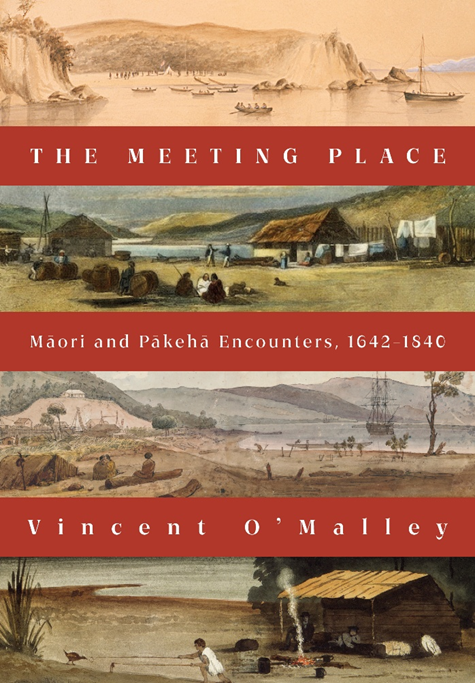The Meeting Place: Māori and Pākehā Encounters, 1642-1840 – New Edition
I’m pleased to say that later this year Bridget Williams Books will be publishing a new edition of The Meeting Place: Māori and Pākehā Encounters, 1642-1840, originally published by Auckland University Press in 2012 and long out of print. I have had many people over the years ask me when it would be available again and it is great that is now happening.
After a quartet of works on the New Zealand Wars, returning to this earlier period has been fascinating. In The Meeting Place I draw upon an idea developed by the North American historian Richard White. White wrote a famous book in 1991 called The Middle Ground, developing a concept that sought to explain a specific phase of colonisation in which mutual accommodation and adaptation was born out of necessity. It was, White wrote, a place in between cultures where new meanings and practices were forged. And those new meanings and practices were unique to that zone of interaction (or what I have called the ‘meeting place’).

I argue that we can see something similar at work in pre-Treaty New Zealand, and in weaker form perhaps through the next two decades. Many books on the pre-1840 era have tended to emphasise conflict and chaos, and although these were present, what I am really interested in is the story of how two quite different peoples managed to rub along with one another most of the time.
It wasn’t a case of Māori and Pākehā sitting round the campfire singing Kumbaya. There were some rough and ready characters involved but what bound them together was mutual self-interest. Both parties learnt that they couldn’t always get what they wanted by force, as a result of which new forms of accommodation had to be developed and learned over time.
Mutual self-interest allowed an always volatile and sometimes violent encounter situation to open up more harmonious forms of interaction, following initial incomprehension and misunderstanding. Both Māori and Pākehā came to recognise a need for one another that provided the basis for unique forms of engagement.
In the two decades after 1840 the forces that gave rise to this ‘middle ground’ ebbed away. Its survival was always dependent upon a kind of rough and ready balance of power between the parties. But with the British government came organised settlement and large increases in migrant numbers that would in time render Māori a minority in their own land. Those new arrivals were often ignorant of the old rules of the ‘middle ground’, and had not travelled half way round the globe in order to enter into a relationship of equals with mere ‘natives’.
But in the twenty-first century the lessons from this earlier time of accommodation and learning seem highly redolent.
This new edition features expanded coverage of Te Waipounamu and other areas, along with more on the incredible story of Māori travel beyond Aotearoa before 1840 (drawing from research for my 2015 book Haerenga: Early Māori Journeys Across the Globe), besides new illustrations. It is due to be published in October. For more information or to pre-order a copy direct from the publisher visit the book page on the BWB website.
Add a comment: